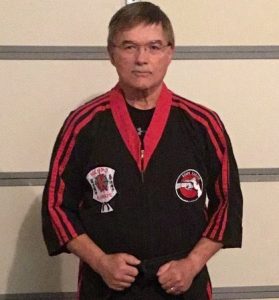Personal trainers may encounter a vast array of clients with even more varied backgrounds and skillsets. At some point, a martial art practitioner may solicit you for guidance to either prevent injury or improve strength for their chosen sport. Combat sports require the development of red-slow-twitch (Type I) and white-fast-twitch (Type II) muscle fibers. Dan Inosanto, Master in Filipino Martial Arts, has one saying: “a fight cannot be won if you become tired.”
The mitochondria is the organelle responsible for the chemical energy needed to power the cell’s biochemical reactions. The chemical energy in the mitochondria is stored in the molecule called adenosine triphosphate (ATP). Simply put, if you want to increase mitochondria in a cell, then you increase the energy demand on the cell. The combat-athlete will need energy on demand fueled within the red-slow-twitch and the white-fast-twitch muscle fibers. Here’s how trainers can program for combat athletes.
Tailored Training for Martial Arts
The Need for Power & Speed
Two types of muscle fibers are in the skeletal-muscle system, red-slow twitch for endurance; white-fast twitch for explosive power. Red and white muscle fibers define how they produce energy. In other words, creating energy to generate endurance and force, respectively.
Red-slow-twitch muscle fibers contain more blood-carrying myoglobulin. This source of energy can sustain force, but not a significant force, for an extended period of time. Slow-twitch fibers are first recruited, having a low threshold of activation when the muscle contracts. If the force needed exceeds what the red-slow-twitch fiber performs, then the white-fast-twitch muscle fiber is recruited.
While the force generated by the fast-twitch exceeds that of the red-slow twitch muscle fiber, they are quicker to fatigue. The white-fast twitch muscle fiber is either IIa, oxidative glycolytic, i.e., using oxygen to convert glycogen to ATP; and IIb, fast glycolytic, that relies on stored ATP in the fiber to generate energy.
Developing Endurance and Strength for Combat Sports
Training the red-slow-twitch muscle fiber.
Exercises include:
- Plank, side plank, and single-leg balance plank. Each plank starting at 30 seconds, building to a maximum of 3 minutes.
- Resistance training utilizing high repetitions at slower tempo with 45 to 60% of the maximum weight, for aerobic metabolism. Use short rest intervals between exercises not to exceed 30 seconds.
- Circuit training, alternating one exercise to the next with no-rest-time between.
Training white-fast-twitch muscle fibers.
Exercises include:
- Resistance-barbell training with heavy weights. The heavier weight will recruit more fast-twitch fibers. Sets include 3 to 6 repetitions with 90 second rest period between sets, which allows replenishment of spent ATP.
- Functional exercise with kettlebells. Power-based movements with kettlebells allow explosive-based movements recruiting more fast-twitch fibers.
- Kettlebell Training by Russian Athlete, Pavel Tsatsouline.
- Kettlebells move freely and adjusts to your body.
- Barbells do not provide the functional movement that adjusts to your body.
In Summary
Combat sports require development of both red-slow-twitch and white-fast-twitch muscle fibers, for endurance and explosive/powerful movements, respectively. Combat training is preferable with kettlebells because they move freely and adjust to one’s body weight, which is defined as functional training.
On the other hand, the barbell is awesome for heavy weight training and developing the explosive power within the white-fast-twitch muscle fibers. However, the barbell is unforgiving because it does not adjust to one’s body weight, making injury more a possibility. For combat sports it is preferable to focus on functional training via kettlebells, with limited focus on barbells.
About the Author
 Dr. David Brancato maintains certifications with 1st degree black belts in Kenpo Karate, Kick Boxing and Street Defense. He is currently working on his 5th Dan in Kenpo Karate. Aligned with martial arts is his continued certification though NFPT. Certification from NFPT started in March of 2000.
Dr. David Brancato maintains certifications with 1st degree black belts in Kenpo Karate, Kick Boxing and Street Defense. He is currently working on his 5th Dan in Kenpo Karate. Aligned with martial arts is his continued certification though NFPT. Certification from NFPT started in March of 2000.
Guest authors offer experience and educational insights based on their specific area of expertise. These authors are contributing writers for the NFPT blog because they have valuable information to share with NFPT-CPTs and the fitness community at-large. If you are interested in contributing to the NFPT blog as a guest, please send us a note expressing your interest and tell us how you can contribute valuable insights to our readers. We look forward to hearing from you! Send to editor@nfpt.com

